
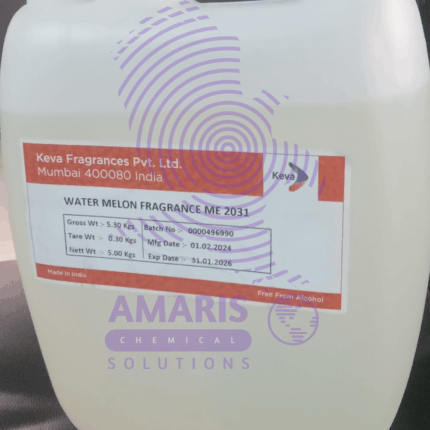
Dextrose monohydrate 500gms
$2,300.00 Original price was: $2,300.00.$2,200.00Current price is: $2,200.00.
Dextrose monohydrate, also known as glucose monohydrate, is commonly used in laboratories for various purposes, especially in biological and biochemical experiments. Here are a few ways it might be used:
- Culture Media: Dextrose monohydrate is often included in culture media for microbial growth. It serves as a carbon source for microorganisms.
- Cell Culture: In cell culture, dextrose monohydrate can be used as an energy source for cells. It provides glucose, which is a vital nutrient for cell growth.
- Buffer Solutions: It can be used in buffer solutions to maintain pH levels during experiments, especially those involving enzymatic reactions or other biochemical processes.
- Analytical Chemistry: In analytical chemistry, dextrose monohydrate can be used as a standard for calibrating instruments or as a reagent in various assays.
- Freezing Medium: It can be included in freezing media for the preservation of biological samples.
- Chemical Synthesis: Dextrose monohydrate may also be used as a reactant or a reducing agent in various chemical synthesis reactions.
uses of Dextrose monohydrate
Culture Media:
Glucose monohydrate is frequently used in microbiology laboratories as a carbon source in culture media for growing microorganisms. Many bacteria and fungi utilize glucose as a primary energy source for growth and reproduction.
Cell Culture:
In cell biology and tissue culture, glucose monohydrate is an essential component of growth media. It provides a readily available energy source for cells to support their metabolic activities and proliferation.
Biochemical Assays:
Glucose is often used as a substrate or a control in biochemical assays and experiments. For instance, it can be utilized in enzymatic assays to study the activity of glucose-specific enzymes like glucose oxidase or hexokinase.
Buffer Solutions:
Glucose monohydrate can be incorporated into buffer solutions to help maintain a stable pH environment during various laboratory procedures. It is particularly useful in buffering systems where maintaining physiological pH ranges is critical.
Cryopreservation:
Glucose solutions are commonly used in cryopreservation techniques to preserve biological samples at ultra-low temperatures. Glucose serves as a cryoprotectant, helping to prevent cellular damage during freezing and thawing processes.
Diagnostic Tests:
Glucose is a vital component in various diagnostic tests used in clinical laboratories. For example, glucose assays are routinely performed to measure blood glucose levels for the diagnosis and monitoring of diabetes mellitus.
Chemical Synthesis:
Glucose monohydrate can be employed as a starting material or a reactant in organic synthesis reactions, especially in carbohydrate chemistry and related fields.

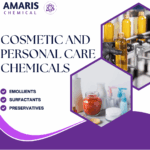
 Emollients
Emollients Humectants
Humectants UV Filters
UV Filters Surfactants (cosmetic)
Surfactants (cosmetic) Preservatives (cosmetic)
Preservatives (cosmetic) Fragrances and Essential Oils
Fragrances and Essential Oils Antioxidants (cosmetics)
Antioxidants (cosmetics)
 Solvents (lab)
Solvents (lab) Chromatography Chemicals
Chromatography Chemicals Microbiology and Cell Culture Reagents
Microbiology and Cell Culture Reagents Biochemical Reagents
Biochemical Reagents Inorganic and Organic Standards
Inorganic and Organic Standards Spectroscopy Reagents
Spectroscopy Reagents Molecular Biology Reagents
Molecular Biology Reagents
 Precious Metal Extraction Agents
Precious Metal Extraction Agents
 Plasticizers
Plasticizers Polymerization Initiators
Polymerization Initiators Stabilizers
Stabilizers Monomers
Monomers Fillers and Reinforcements
Fillers and Reinforcements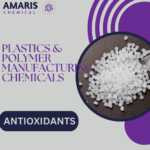 Antioxidants (plastics)
Antioxidants (plastics)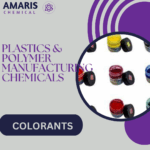 Colorants (plastic pigments,Dyes)
Colorants (plastic pigments,Dyes)
 Fertilizers
Fertilizers Plant Growth Regulators
Plant Growth Regulators Soil Conditioners
Soil Conditioners Animal Feed Additives
Animal Feed Additives Biostimulants
Biostimulants
 Dough Conditioners
Dough Conditioners Flour Treatments
Flour Treatments Fat Replacers
Fat Replacers Preservatives (baking)
Preservatives (baking)
 Surfactants (cleaning)
Surfactants (cleaning) Builders
Builders Bleaching Agents
Bleaching Agents Enzymes
Enzymes Solvents (cleaning)
Solvents (cleaning) Fragrances
Fragrances Disinfectant
Disinfectant Metal cleaning
Metal cleaning
 Binders/Resins
Binders/Resins Pigments
Pigments Solvents (paint)
Solvents (paint) Additives
Additives Driers
Driers Anti-Corrosion Agents
Anti-Corrosion Agents Specialty Coatings
Specialty Coatings Functional Coatings
Functional Coatings Application-Specific Coatings
Application-Specific Coatings
 Sealants and Adhesives
Sealants and Adhesives
 Biodegradable Surfactants
Biodegradable Surfactants Bio-based Solvents
Bio-based Solvents Renewable Polymers
Renewable Polymers Carbon Capture Chemicals
Carbon Capture Chemicals Wastewater Treatment Chemicals
Wastewater Treatment Chemicals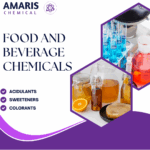
 Preservatives (food)
Preservatives (food) Flavor Enhancers
Flavor Enhancers Acidulants
Acidulants Sweeteners
Sweeteners Emulsifiers
Emulsifiers Antioxidants (food)
Antioxidants (food) Colorants (food)
Colorants (food) Nutrient Supplements
Nutrient Supplements Nutraceutical Ingredients
Nutraceutical Ingredients
 Fresh Herbs
Fresh Herbs Whole Spices
Whole Spices Ground Spices
Ground Spices Spice Blends
Spice Blends
 Surfactants(oil)
Surfactants(oil)
 Antibiotics
Antibiotics Active Pharmaceutical Ingredients
Active Pharmaceutical Ingredients Excipients
Excipients Vaccine Adjuvants
Vaccine Adjuvants Nutraceutical Ingredients
Nutraceutical Ingredients Solvents (pharmaceutical)
Solvents (pharmaceutical)
 Automotive chemicals
Automotive chemicals Pyrotechnic Chemicals
Pyrotechnic Chemicals


 Vulcanizing Agents
Vulcanizing Agents Accelerators & Retarders
Accelerators & Retarders Antidegradants
Antidegradants Reinforcing Agents
Reinforcing Agents Plasticizers & Softeners
Plasticizers & Softeners Fillers & Extenders
Fillers & Extenders Blowing Agents
Blowing Agents Adhesion Promoters
Adhesion Promoters






















Kiptum –
Acts as a preservative to extend the shelf life of products